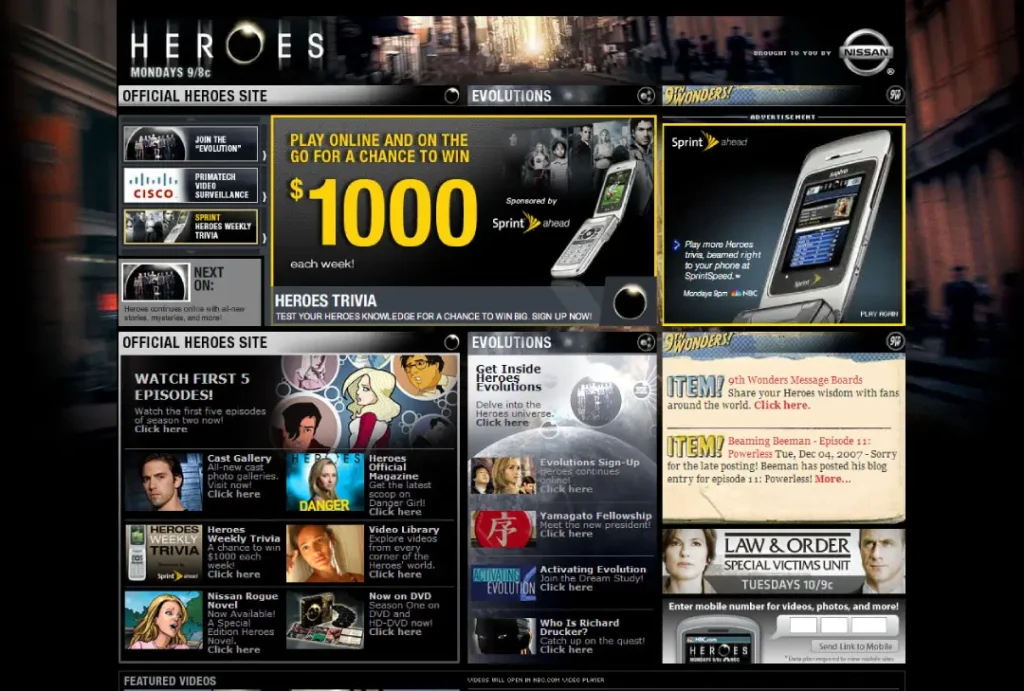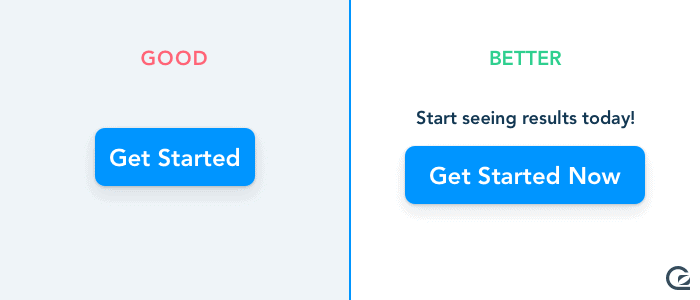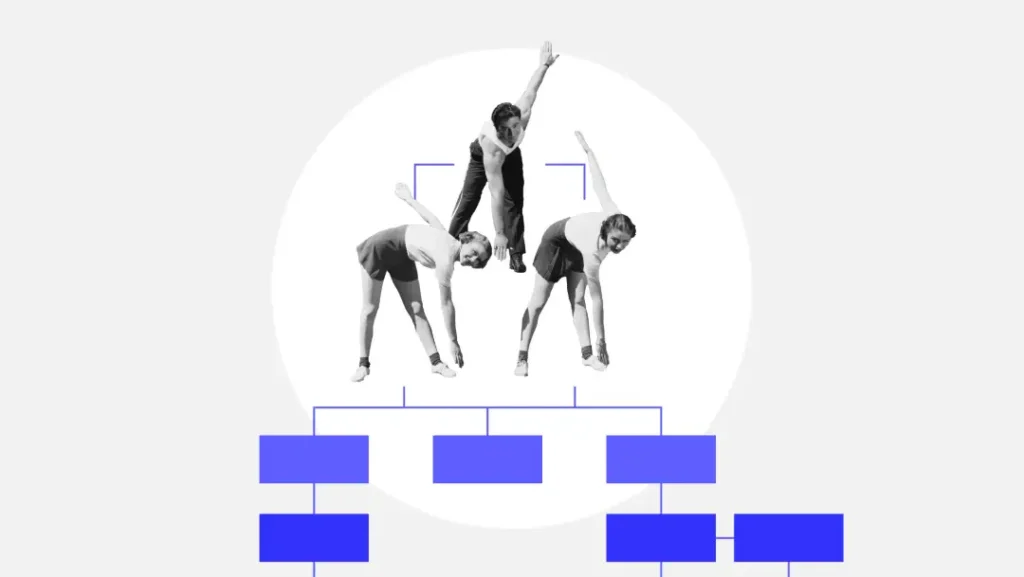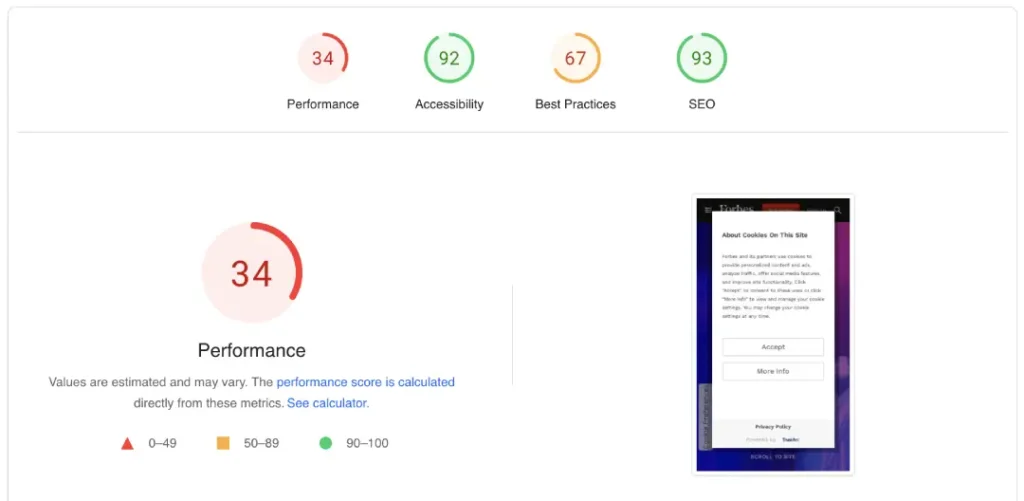15 Common Mistakes in Web Design and How to Avoid Them
We have all been to that point – browsing a website that looks like a monkey put it together. It has slow load times, unreadable text, and buttons that go nowhere. You know what I mean; it makes you want to chuck your laptop out the window.
It’s true — good web design is intricate. It takes skill, practice and understanding of what users want when visiting a site. Even the pros mess up sometimes. However, many common web design mistakes can be avoided if you know what to look for.
In this article, we’ll walk through 15 common mistakes in web design and how you can avoid making them on your site. Whether you’re a designer, developer or someone who wants their site not to suck, this advice will get you on the right path.
Table of Contents
1. Cluttered and Disorganised Layout

This one is almost self-explanatory, but it’s surprising how many websites can assault the eyes. Remember that white space is your friend. It helps to guide the user’s eye and create prioritisation and flow.
Too many elements on a page without hierarchy or structure cause confusion and high bounce rates. Don’t make your visitors work hard to determine where they should look next.
- Limit each page to a few key elements or sections.
- Use white space, grids, and visual breathing room generously.
- Create a clear visual hierarchy through different heading styles, spacing, colours, etc.
Real-world example: Craigslist.org. It’s ugly as sin, but its stripped-down layout and organisation simplify finding what you want. Sometimes, less is more.
Adhere to Layout Conventions
Your website's layout and navigation should be intuitive and follow established conventions that users are already accustomed to. For example:
- Logo in the top left links to the homepage
- Main navigation across top or down left side
- Search in the top right
- Footer with secondary links & info at the bottom
Break these conventions at your own risk. You may think you're clever or innovative, but you'll likely confuse and frustrate visitors.
Responsive & Mobile-Friendly Design
I cannot stress this enough: In 2024, your website MUST be optimised for all screen sizes and devices. Nothing kills a mobile browsing experience like tiny text, microscopic buttons, excessive zooming/pinching required…
And I’m not just talking about looking good either – mobile users have different needs/usage patterns than desktops, such as your content prioritisation, navigational menus, CTAs, etc., all need rethinking for the small screen (or even voice!).
2. Slow Load Times
Kudos if you managed to get someone to your website. But if it loads at a glacial pace, you just burn through all your user's patience and goodwill before they see a single page.
Studies show a 1-second delay in page load time can hurt conversions by up to 7%. And let's be honest, today's ultra-connected world has turned us into impatient speed gremlins – we want stuff to be instant. If your site doesn't load lickety-split, people will simply bounce.
To quote the great web philosopher Ricky Bobby: “If you ain't first, you're last!”
The fix:
- Optimise all images properly with file size and dimensions in mind
- Use a content delivery network (CDN) to reduce server delays
- Minify and compress code files like CSS, JavaScript, etc.
- Implement caching rules so repeat visitors load pages faster
- For massive file hogs, use lazy loading when possible
3. Illegible Text and Poor Colour Choices

Hey, designers, your fancy font choices and wild colour combinations may look cool, but you're doing it wrong if they impair legibility and scannability.
Tiny text, poor colour contrasts, glossy text effects, and walls of unbroken text all make your content extremely difficult and unpleasant to read. And if your visitors can't easily read your content, you can kiss engagement and conversions goodbye.
The fix:
- Stick to standard, clean fonts for body text and headers (no crazy novelty fonts!)
- Use generous line heights of 1.5-2x the font size
- Ensure high contrast between text and background colours
- Break up long stretches of text with Headers, spacing, images, etc.
- Don't be afraid of slightly larger font sizes on desktop (16px body is the new standard)
4. Lack of Visual Hierarchy
As mentioned, an excellent visual hierarchy guides visitors through your content purposefully and logically. It creates a clear prioritisation and sense of order.
You lose that hierarchy and flow if all your elements look the same size, importance, colour, etc. This makes your content feel scattered and disjointed, like a bad PowerPoint presentation. Use familiar visual cues like:
- Large vs small text sizes
- Bold and light fonts
- Colours (but only a few!)
- Spacing and containers
- Numbered lists or steps
The fix:
- Establish a strict typographic scale with planned header sizes
- Use proximity and whitespace to group related elements
- Leverage colours intentionally to show hierarchy and relationships
- Use contrasting background colours or borders to make elements pop
Scannable Content is King
Speaking of visual flow, you must accept that humans don't read webpage content linearly or word-for-word like a book. We scan, picking out individual words, sections, and sentences.
Your content needs to be organised and formatted for this kind of scanning behaviour with the following:
- Pithy section headers and sub-headers
- Bulleted and numbered lists
- Short paragraphs and sentences
- Highlighted keywords or calls-to-action
- Meaningful images or icons to break up text
5. Terrible Navigation and Unclear CTAs

The navigational system is the central nervous system of your website. It's how people get around and access different pages and content sections. You'll lose visitors quickly if it's cluttered, disorganised, or confusing.
The fix:
- Keep your primary nav simple and limited to just 5-7 main categories or sections
- Research everyday user tasks and behaviours to drive the nav structure
- Use clear, descriptive link text based on user language
- Utilise proper visual signifiers like hover effects, active states, etc.
- Provide secondary nav, breadcrumbs, filters, and search as helpers
- Be consistent! The same link labels in multiple places go to the same destination.
And while we're on the topic, always make it clear to users how to take the following action with prominent, unmissable calls-to-action (CTAs).
Button text should be clear and concise, leaving no guesswork. “Submit” or “Download” is way better than vague text like “Click Here”. Additionally, your CTAs must follow visual conventions like contrasting colours, hover effects, proper spacing, etc.
Mobile Nav Deserves Special Attention
Make sure your mobile nav menus and interactions are equally dialled in. Tapping tiny hamburger icons and wrestling with clunky dropdowns on the phone is a massive pain.
Some mobile nav best practices:
- Use a mix of navigation patterns like tabs, hamburger menus, bottom bars
- Design ample spacing and tap target sizes for fingers
- Ensure primary and secondary navs are easily accessible
- Stick to simple gestures like tapping and scrolling
- Hide nav behind a menu if needed to maximise screen real estate
6. Overuse of Distracting Animations and Transitions
Subtle, purposeful animation can be an effective tool in web design. It can guide users through processes, provide feedback, and make things delightful and polished.
However, going overboard turns your website into an obnoxious carnival sideshow. We're looking at you, loading spinners that never stop spinning and infinitely looping background videos!
Too much movement is visually fatiguing and can make your content difficult to read and interact with. Even worse, lots of parallax scrolling, auto-playing videos, and other intense effects can utterly murder performance on lower-spec devices.
The fix:
- Use animation deliberately and sparingly as a supportive tool
- Ensure animations are fast, lightweight, and performant
- Stick to subtle effects like fades, slides, and scaling transformations
- Never auto-play video or audio! Give users control.
- Avoid infinite or perpetual loading/progress animations.
7. Non-Existent Flexibility and Extensibility

It's shocking how many websites show zero thought for future scalability or adaptability. What happens when you need to add more pages, content types, or functionality down the road? If your site wasn't built with flexibility and extensibility as core principles, you'll likely have to rebuild everything from scratch. What a nightmare!
The fix:
- Build your site's front end using a styling architecture or methodology like BEM, OOCSS, SMACSS, etc.
- Establish a robust pattern library and UI component system
- Make liberal use of UI kits, style guides, and design systems
- Develop a modern, modular CSS & JS codebase with reusability in mind
- Use a flexible, data-driven content management system (CMS)
- Adopt an iterative development process with scalability testing
Even if your website is basic now, work upfront to ensure it can quickly evolve and grow with your business's needs.
Maintaining Code is Equally Important
Do you know what else often gets overlooked? The long-term maintainability and organisation of a website's codebase (HTML, CSS, JS, etc.).
Haphazard, bloated, undocumented code multiple devs have hacked together over the years is pure misery to update or build on later. Consistent naming conventions, separation of concerns, code comments, and overall architectural planning are crucial.
Performance testing, browser compatibility checking, and code validation at every stage are equally vital – not just an afterthought. Nothing's more frustrating than dealing with cross-browser bugs or efficiency issues way after the fact.
8. Accessibility? What's That?
I have two words for you: accessibility and inclusivity. Did you even test your colour choices, typography, animations, media, etc, to make sure they’re usable by people with disabilities? Or did you just assume everything would be hunky-dory?
Making a website accessible to individuals with visual, auditory, motor or cognitive impairments isn’t only good ethics – it’s also good business. Over one billion people worldwide have some form of disability; that’s a potential market of that magnitude.
What should be done:
- Design with accessibility standards such as WCAG in mind right from the beginning
- Ensure sufficient colour contrast for text, buttons, etc.
- Provide alternative text for image; and transcripts for audio/video.
- Allow all functionality to be operated via keyboard.
- Support assistive technologies like screen readers
- Test rigorously with actual users of all abilities
So, instead of treating it as an afterthought, prioritise accessibility at the start, and you’ll create a better experience for everyone involved.
9. Bloated Page Sizes and Unnecessary Requests

How many HTTP requests and MB of data does your website's homepage need to load fully? If you don't know, you've got a problem. Excessive page weights absolutely murder load times, especially on lower-bandwidth mobile connections.
Why does a simple blog post need 37 different JS, CSS, font, and image file requests weighing 5MB+? All those excessive resources and render-blocking code are just wasting precious time.
The fix:
- Compress and minify all code files (HTML, CSS, JS)
- Concatenate multiple script files together into a single request
- Optimise and appropriately size images for various screen densities
- Subset or delay loading of web fonts to unblock rendering
- Use a content delivery network (CDN) for faster file transfer times
- Implement lazy loading for off-screen images and assets
- Run your site through tools like WebPageTest.org to find opportunities
Your goal should be to trim your site to the leanest, most critical code and assets needed to provide a flawless initial viewport load. Then, you can progressively load any additional functionality or content.
10. Broken Links and 404 Pages
A few things are more frustrating for a website visitor than clicking a link only to land on a 404 “Page Not Found” error. It instantly destroys trust and confidence in the website and company. Why would anyone want to stick around after that kind of a letdown?
The fix:
- Regularly audit all internal and external links for 404 errors
- Use a link checker tool or browser extension for automated testing
- Set up proper 301 redirects for any changed page URLs
- Create a helpful, user-friendly 404 page with:
- Clear error messaging
- Search functionality
- Navigation to get back on track
- Links to popular or relevant content
And hey, even your 404 page is a branding opportunity! Inject humour, illustrations, or delight in softening the blow of a dead end.
What About the Reverse? 404 When a Page Should Exist
While we're on 404s, here's a pro tip: Monitor your website's analytics and error logs for instances where an actual page erroneously throws a 404. These could be cases of:
- Incorrect redirects or rewritten URLs
- Bugs in your routing or server-side code
- Search engine bots hitting non-existent pages
In these cases, you need to fix the underlying code issue to ensure legitimate pages return the proper 200 “OK” HTTP status code they should. No one likes a ghost page!
11. Lack of Interactivity and Engagement
In 2024, a current website has to do more than just act as a digital brochure. People today expect an interactive experience that is rich and memorable enough to hold their attention while enabling them to access the required information easily.
A “contact us” form only scratches the surface; you need to be using:
- Chatbots or messaging widgets
- Dynamic FAQ or knowledge-base search
- Hover effects, accordions, and other micro-interactions
- Calculators, quizzes, surveys, and data tools
- Comment and discussion functionality
- Augmented reality (AR), virtual reality (VR), voice interaction
12. Ignoring Search Engine Optimisation (SEO)

Unless your website is solely an internal tool or native mobile app, you must optimise for organic search engine visibility and rankings. Why spend all that time, money, and effort creating an excellent site that no one can discover and access?
I won't dive deep into technical SEO factors like site architecture, link building, structured data, etc. Just know that if you completely disregard SEO best practices, your site's traffic potential is severely limited.
Some quick SEO tips to follow:
- Implement a keyword strategy with thorough keyword research
- Use descriptive, keyword-rich page titles and meta descriptions
- Optimise copy with proper header tags, keyword density, and semantic HTML
- Build an XML sitemap and submit it to search engines
- Focus on mobile page speed and responsiveness
- Generate high-quality backlinks through guest posting, directories, etc.
You must help search engines quickly discover, crawl, render, and understand your website's content and structure. That's the only way to maximise organic visibility.
13. Lacklustre Performance Testing and Monitoring
I already touched on performance factors like page weight optimisation earlier. But even if you follow all those best practices for front-end performance, your site could still suffer from poor stability and uptime due to issues on the server side.
Things like inadequate hosting resources, lack of caching rules, unoptimised databases, inefficient back-end code, and non-detection of traffic surges can all lead to dreadfully slow page loads or complete outages. And we all know even the slightest hiccup can devastate sales, marketing efforts, and overall user experience.
The fix:
- Invest in quality hosting with sufficient computing power and CDNs
- Implement caching systems, load balancing, and database optimisation
- Use monitoring tools to track metrics like availability, response time, throughput
- Set up alerts for potential traffic spikes or impending bottlenecks
- Have rollback and failover plans in place if issues do occur
- Regularly audit server configs and back-end code for inefficiencies
14. Ignoring Basic Security Protocols

While design and user experience rank high on web designers' priority lists, security must be addressed. Cyber-attacks can cause even the most reputable sites to crash within seconds, damaging brand trust beyond repair.
From encrypting transmitted and saved sensitive user information to preventing injection attacks or cross-site scripting vulnerabilities, there are many potential areas for security breaches.
The Solution:
- Use HTTPS protocol for every page, not only those that contain sensitive details.
- Adopt strong password policies backed by two-factor authentication methods
- Keep software up-to-date with the latest patches released by vendors regarding security issues
- Acquire services from a web application firewall provider as well as a DDoS protection service supplier
- Ensure that all user inputs are validated and sanitised on server-side codes before further processing is done with them
- Apply file permission based on the least privilege principle, i.e., only grant necessary permissions needed for each specific task performed by certain files within your site’s structure
- Create an incident response plan that should be activated when things go wrong, such as detecting malware or unauthorised access attempts into critical systems holding important data about clients/customers/partners/vendors, etc.
It shouldn’t be an afterthought – bake it in right at the beginning!
Security must be taken seriously but incorporated into every stage of the website building process, from its architectural design to actual coding practices employed during development phases, lest one want to invite attackers through wide-open doors.
15. Treating Mobile as an Afterthought or Separate Experience
In 2024, treating mobile as a separate, disconnected experience from the desktop is entirely outmoded. While better than separate mobile URLs, responsive design still has limitations in providing a truly optimised experience.
Your website needs to be built from the ground up as a unified, platform-agnostic digital product that works flawlessly regardless of device, input type, or browsing context. This means:
- Adopting a design philosophy like atomic design or utility-first CSS
- Using a modern front-end stack like React, Vue, or Web Components
- Supporting mobile-first interactions like swiping, gestures, and voice
- Dynamic serving of assets tailored to each device's capabilities
- Unified, responsive layout engines for seamless experiences
The days of browser detection and device-specific code are over. Your codebase and architecture should enable an intelligent, adaptable front-end tailored to each use case.
Wrapping Up
Then, here are 15 typical traps and anti-patterns that can quickly destroy an otherwise excellent website. The main point is that great web design must be total, deliberate, and forward-looking throughout every phase.
From initial sketches and information architecture to final front-end and back-end implementation, you must always consider usability, performance, flexibility (and future scalability). Aesthetics must be balanced against interactivity, which needs to be balanced with marketing requirements and SEO alongside technical considerations.
Any of these components ignored will lead to significant suffering for your site, even if it’s beautiful at first glance. User experience is holistic.
Therefore, I would recommend going through this list with your website in mind; there’s bound to be something you can improve on, no matter how established the product may seem from an outside perspective.
Better safe than sorry when dealing with anything related to web design or development, so good luck!
FAQs on Common Mistakes in Web Design
What is the number one rule of good web design?
Fitting the user’s needs is the most important of all the criteria. There is no point in making a website beautiful if it’s hard to use or navigate through. You should always start with your audience — their goals, behaviours, and contexts— and design around them.
How do I make my website load faster?
You can optimise image file sizes, minimise HTTP requests, leverage browser caching, use a content delivery network (CDN), and load non-critical assets asynchronously after the initial page load. Cheap hosting will also slow down your site speed.
How often should I update or redesign my website?
Do not go for occasional monolithic redesigns. Let it be in constant evolution through iterative updates so that you remain up-to-date with design trends and technological advances, which are only done every 2-3 years at most.
Which matters more: visual design or functionality?
Both! The site has to look fantastic but work flawlessly, providing value through helpful functions and user interactions. Design and functionality depend on each other symbiotically.
What can I do to improve accessibility on my website?
Always follow WCAG guidelines; use proper heading structures & semantic HTML; ensure sufficient colour contrast; add alt text for images; enable keyboard operability; provide transcripts for multimedia; test with users having diverse abilities.
What are some common mistakes made when choosing colours for web design?
Using low contrast between text/background colours; relying solely on colour to convey the meaning which may not be distinguished by people who are colourblind or have poor vision altogether; using busy backgrounds that make reading difficult because they conflict with text legibility or inconsistent application of colours throughout different elements within same page/site entity.
How do I create an effective navigation system?
Arrange information based on user needs/everyday tasks; employ familiar conventions, e.g., top/left placement of nav links; include broad top-level categories and more specific child pages; provide supportive elements like search, sitemaps, & breadcrumbs.
Why is responsive design so important nowadays?
With the advent of mobile devices having different screen sizes, your website should dynamically adjust itself and present an optimised experience for each device depending on its capabilities, such as input types supported or bandwidth limitations.
Should I use a single-page or multi-page site?
It depends on the content amount/depth, type and expected user consumption patterns. Single-page apps are great for more app-like contained use cases, while multi-pages work best for comprehensive guides, blogs, etc., with lots of content that needs to surface in search results.
How can I make my ecommerce website more usable?
Provide clear calls-to-action; streamline the checkout process; offer secure payment options; show customer reviews where applicable/necessary; present high-quality product photos along with detailed descriptions/features lists where possible/practical; allow filtered search/navigation by category or attribute values such price range, colour etc.; include helpful shipping/return policies.
What skills does one need to become a great web designer?
Apart from being visually creative, one should also know user research, information architecture(interaction design), front-end coding(accessibility), and SEO principles(performance optimisation).
Should I hire an agency or freelancer to build my website?
It all depends on what you are looking for in terms of scale, sophistication and timeline. Agencies provide vast resources at higher costs, while freelancers may lack specialised abilities. However, they still offer flexibility, especially regarding smaller projects.
